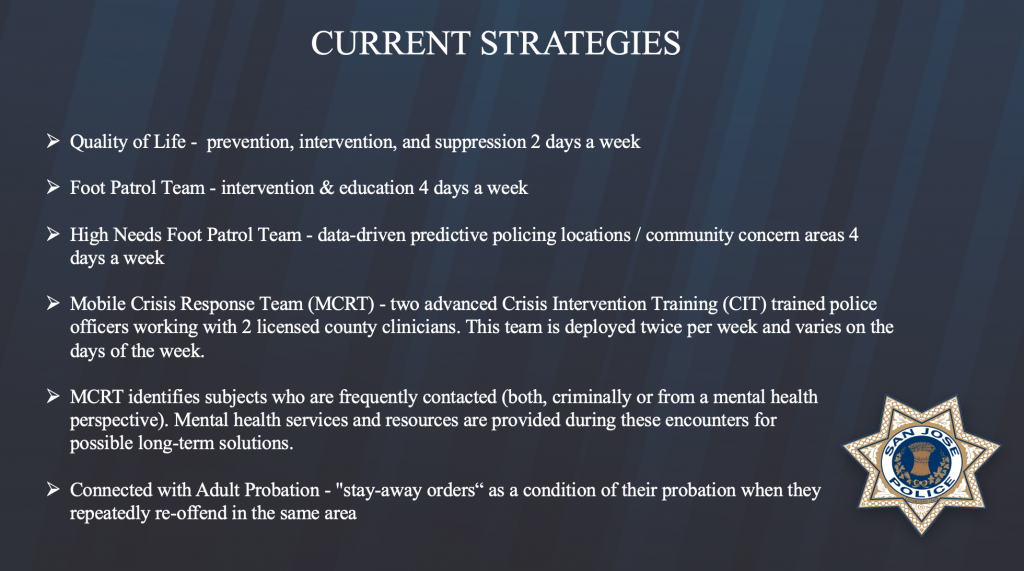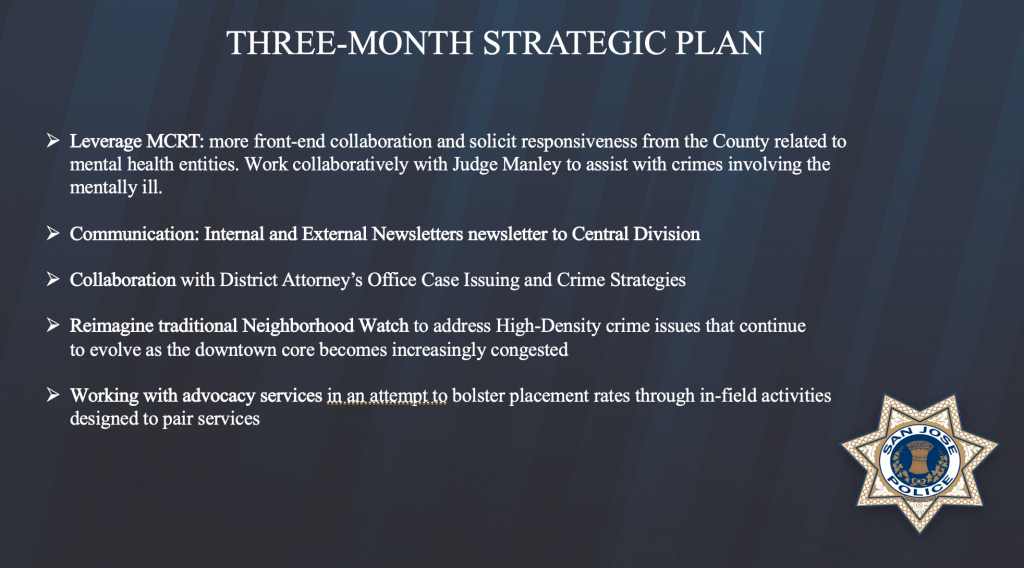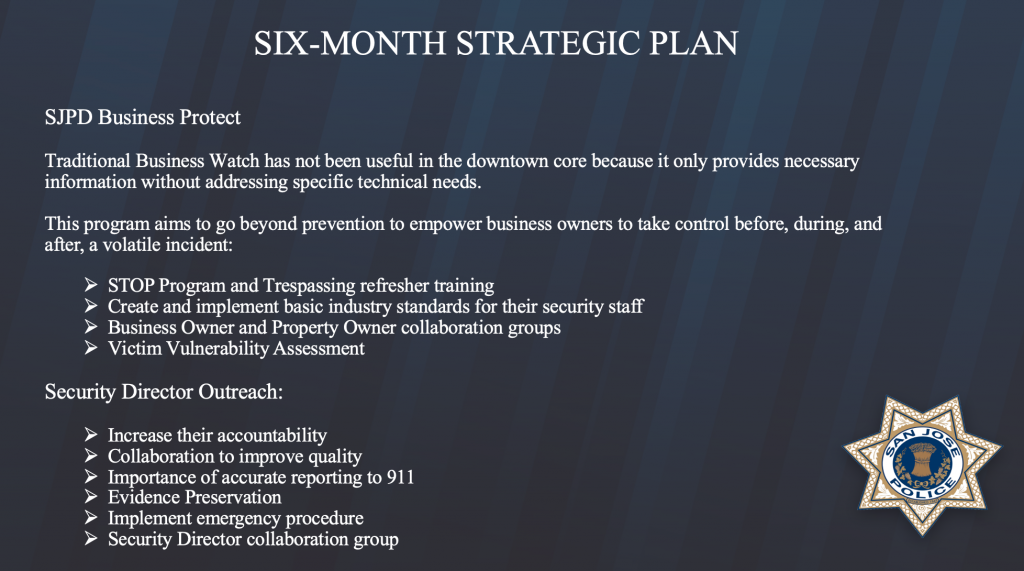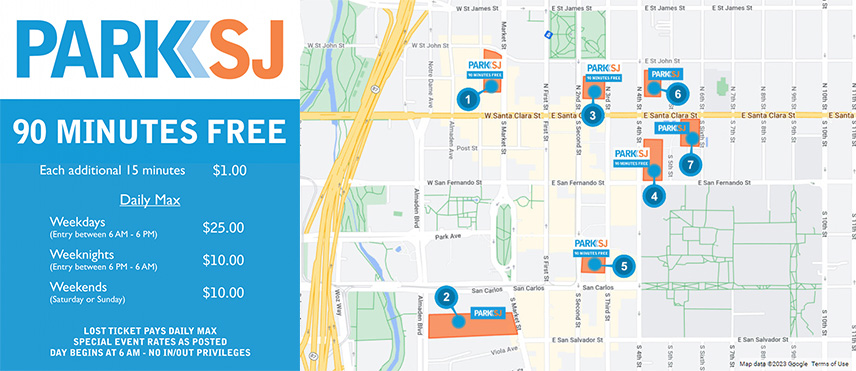Crime Safety Report: San Jose Police Department Deputy Chief Heather Randol and Capt. Stan McFadden presented three- and six-month strategies to reduce a spate of crime occurring in January and February, culminating with a pre-Lunar New Year robbery of the mother of Academic Coffee owner Frank Nguyen.
“We want to be responsive and protect businesses,” Randol told business owners at the outset of her talk at the Feb. 12 SJDA public board meeting. She and McFadden also stressed the importance of community collaboration in solving the issues downtown.
The department breaks the crimes occurring into these categories: Narcotic, assaults, theft and robbery. Driving the crimes are mental health and drug addiction, alcohol addiction, unhoused and blight, which helps police in preparing a strategy plan, she said.
Current tactics that help police develop the plans are:
- Quality of Life: Officers are focused on prevention, intervention and suppression two days a week;
- Foot Patrol Team: Officers are on downtown streets four days a week intervening and educating business owners on what officers are trying to achieve;
- High-Needs Foot Patrol Team: Four days a week, officers are using data to police predictive locations where crimes are most likely to occur and addressing community concerns.
- Mobile-Crisis Response Team: Two officers with advanced crisis-intervention training work with two licensed county clinicians, frequently contacting and assessing subjects frequently for criminal and mental health reasons. They have the ability to take the lead for further evaluation and provide mental health services and resources resulting in possible long-term solutions, Randol said.
- Connections with adult probation: Police obtain “stay-away orders” as a condition of a subject’s probation when they repeatedly re-offend in the same area. Police make arrests when they go back out to same location and see the same people committing the same crime – hoping probation helps to have a more lasting effect.
“We want to see these programs extended to seven days a week,” Randol said. “ As we expand, we’ll see greater success.”
In the next three months, police want to be more collaborative, working with county officials to be more responsive to the mental health of some crime-makers; with county judges to assist with crimes involving the mentally ill; with the public and internally with communications; with the District Attorney’s Office at the handling of repeat offenders; and with Neighborhood Watch programs by taking a look at addressing issues as the downtown core becomes more congested and how citizens can take on more responsibility.
“Collaboration is necessary because the police department has limited resources,” Randol said. “And we need to be strategic, focusing on repeat offenders. If we stay in touch and communicate, we solve issues.”
The six-month strategy involves empowering business owners to take control before, during and after a volatile and improving the accountability and quality of private security downtown.
Businesses should get refresher course in the STOP and Trespassing programs; create and implement best practices for security staff and make sure they are trained to meet basic industry standards. Police believe the key to reducing crime is for everyone to understand the plan and know what they are supposed to do.
“Everyone” includes: the city, county, property owners, business owners, community based organizations, behavioral health, DA’s office, judges, adult probation department, vehicle abatement, code enforcement, water district, Caltrans, Department of Transportation, housing, PATH, Groundwerx and parking control.
“In six months, we’ll make changes where we need to,” Randol said.












